Lady Mechanika – Joe Benitez and MM Chen writing; Peter Steigerwald, Martin Montiel, and Joe Benitez art
Steampunk is a strange genre. It is books, comic books, movies, television shows, cosplay, objects, music, and much else. To find an art genre which is also a movement you’d have to go to art deco in the twenties or superheroes in the sixties. And art deco doesn’t have the home-made brass goggles, top hats, leather corsets, furniture, vehicles, and more that fans of Steampunk make for themselves.
With such a spread you know that output is pretty uneven. So it’s great to find some steampunk that works on every level. The Lady Mechanika comics are an example of excellence that people should check out. There are four series available now: the Mystery of the Mechanical Corpse, The Tablet of Destinies, The Lost Boys of West Abbey, and La Dama De La Muerta.
This is an independent comic, but they recently signed on with Diamond Comic Distributors. This is a big step forward for them, since it will get the comics into a lot more comic shops. I think this is an indication of bigger things to come.
I personally am still waiting for this story to be turned into a movie, live action or animated television series. If you put these four stories together they are each an arc of a greater, incomplete story. They are the story of Lady Mechanika.
We don’t know her real name, it’s the tabloids who named her Lady Mechanika. But in reality her look was based on Kate Lambert, aka Kato, a steampunk model and fashion designer.
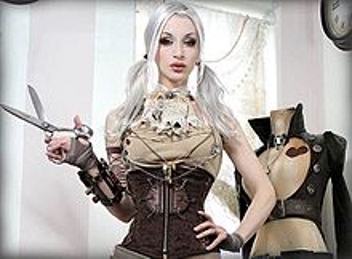
This is Kato, who helped inspire Lady Mechanika.
In fact, cosplay was one of the inspirations of Lady Mechanika. Now Lady Mechanika inspires cosplay.
Kato now lives in California and Lady Mechanika lives in Mechanika City, which is somewhere in Steampunk Britain. She does embody that place, and it embodies her. It is divided between the light and the dark, and carries secrets.
Lady Mechanika is an occult detective and a cyborg with mechanical arms. Her eyes have red irises and black corneas. She also has a mean punch and a good aim to go with a sarcastic attitude and a good heart. Everything you could want.
Lady Mechanika embodies the city. She is a beautiful woman dependent on mechanics. The City has its wealthy and its poor areas and it’s never clear how they fit together. Lady Mechnika has her own dark elements, in that she has amnesia.
In one of the brilliant little touches, Lady Mechanika’s face is drawn just a little shortened to make you subconsciously think she’s younger than she’s supposed to be in the story. It makes her the underdog before the action starts. Not only that, it subtly reminds you that she was made a cyborg as a child.
We don’t know who made her this way. She doesn’t know, either. The arc is she wants to find who did this to her and why. With this central question in place, her own version of Batman’s parents being killed but even more personal, the stories have a terrific unifying element. Eventually you will have to know, but right now you will have empathy with the lead character of the stories.
Lady Mechanika, herself, is an action character, toting guns, using devices, and with enhanced strength. Set in something like the turn of the twentieth century, the steampunk tropes apply. In this world, every invention of the time is not only perfected but widely dispersed. The science of what they thought would be possible is very possible. In other words, airships, artificial limbs, automatons, and the occult all appear.
The society is very Victorian. There is rigid class hierarchy, there are tabloids who don’t tell the truth though the expression ‘fake news’ isn’t in vogue yet, there are the immensely wealthy and the abjectly poor but there is a rising middle class.
The comic does really well with these different social realities, far better than anything you’ll find in Marvel or DC. It is not simply the scenery, it’s the choice of color pallet and the use of shadow makes them different worlds.
Lady Mechanika navigates through the world, taking jobs or having cases thrust upon her as she goes.
The first arc begins with Lady Mechanika hunting down a demon who is terrorizing a poor neighborhood. It turns out the demon is a little creature. It’s name is Ucky and it’s afraid and hungry and remarkably polite. The set-up is reversed.
Ucky’s kind of cute, as such things are ugly but huggable are. Given its small size and limited vocabulary it seems like a child, not threatening at all. You feel sympathy for it much like you do for Lady Mechanika. And Ucky remembers Lady Mechanika when she was younger. Back before she had mechanical limbs. Suddenly, Ucky seems not so young and he has dangerous information.
Bam! Ucky gets shot. Dead. Never comes back. No Bucky clause here.
Ucky’s death shuts him up. And all of this is done in a few panels. There is a real economy of storytelling. This is what good storytelling is about. How many times have you read a comic through and figured you didn’t need to do that again in a hurry?
The artwork is splendidly sumptuous and keeps a similar style despite the differing artists. It’s acrylic gouache with clean lines a great pallet. Gouache gives the colorist the opportunity to change the tone, shading, or coloring in a panel ignoring the lines when it suits the tone. It gives more depth to the scenes and enriches our view of the characters. It compliments the writing.
For example, in the first series, the palette and use of shadow shifts over time as the plot moves from back streets to large homes to a masquerade on an impressively large airship. Basically, things get brighter. The designs carry an impressive Victorian ambience rather than a modern feel with gears attached. Look particularly at the glider wings.
The technology is delightfully period. There are detailed decorations which set the mood of the era. And the details of the art are well done. Look at the scene in the laboratory which shows the chandelier. Spot the face. Nicely done.
Lady Mechanika has an interesting set of supporting characters in this story. She has a tinker, Lewis, who can build anything mechanical. He can build a helicopter about half a century before real history got that going. He builds things and helps find her jobs. He’s also a drunk and, like Lady Mechanika, something happened in his past. But in his case, Lewis seems to bear some responsibility for whatever happened to him.
There are the Littletons. There’s the ram-rod-up-his-butt-but-that’s-OK-for-the-times scientist who was working on something like the experiment that made Lady Mechanika a cyborg. And there’s his daughter, a know-it-all at about eight. She gets better, but for a long time she doesn’t believe that’s the famous Lady Mechanika because she doesn’t know everything the tabloids have written about her.
And every story adds more to the list of characters, each filling something like a slot in a part of the story we haven’t gotten yet. Look at how magic comes into the story. Originally it’s quite muted.
But from the second series (The Lost Boys of West Abbey) the story turns more to the occult. The amplification (really an introduction) is handled well. There is a golem, a human figure made usually of clay (in this case metal) and animated either by carving its forehead or putting a scroll with a sacred prayer in its mouth.
Imagine that being misused. Imagine a new character, a rebbe, Ephraim, aiding Lady Mechanika because he opposes his religion being warped this way. And, yes, they say rebbe and they mean it. And the defilement that is the enemy – this would never get into most companies’ comics. But it’s riveting and you forget that this is magic because you’re caught in the story.
There is a Chinese toymaker, Mr Jang. He makes clockwork toys. That includes teddy bears, including specialist ones. You have to wonder what he and Lewis the tinker are going to do together in coming issues.
And there’s the possible romance figure, Detective Singh. The parallels between him and Lady Mechanika are intriguing. Detective Singh pursues a case when his superiors would have it quietly set aside. They don’t think unimportant poor children are worth the effort. But beneath the chain of command other thoughts control the day. Singh, Lady Mechanika, Ephraim, and others want the case solved. Singh goes from one social order to another in the City, just like Lady Mechnika does.
And here’s part of the genius of this series. It’s usual for a protagonist to have supporting characters who parallel them. There is often another character who is like the protagonist but who has made the wrong decision. In this, Lady Mechanika has several sources for such parallels: the hidden past, the mechanical bits, her concern for others, and so on. They are all used in Lewis, Singh, Dr Littleton, Allie Littleton.
The same applies to the villains. And Lady Mechanika seems to be developing a hell of a rogue’s gallery. Honestly, it’s not up there, yet, but it’s looking like she’s going to have a gallery in the Spider-Man and near the Batman class. She has no Joker or Two-Face, but she does have an Electro, a Hydra, and a Black Mask.
Lady Mechanika’s villains include Lord Blackpool, of Blackpool Armaments. He is a cyborg who wants her technology. He may have been the person who changed her into the cyborg is now. Maybe. He wants something, but it may be he has more complicated plans than that. He is more than steampunk Hammer from the comics – way more than the movie.
Then there is Commander Catherine Winter. Lady Mechanika owes her. For reasons unknown, Commander Winter got Lady Mechanika out of that laboratory where she was transformed. It’s never clear why. But Winter and Mechanika have a falling out, to say the least.
There’s the Hell Riders, a group that affects being demons.
Lady Mechanika has an impressive landscape of ideas. Think of an automaton that’s a teddy bear. That’s great by itself, but here it’s woven into crimes and Jewish mysticism. It’s the springboard to a new character, Rebbe Ephraim. They need his knowledge to follow the clues of who is taking the children. Ephraim becomes an ally.
This set-up is rich and layered. Murder mystery is part of the engine, but Lady Mechanika herself is the rest of it. She is a mystery in herself.
She builds a replacement family. But that makes her vulnerable. And that’s how she gets to the latest arc of her story, La Dama de la Muerta.
The Lady of the Dead sees Lady Mechanika in Mexico, trying to overcome personal loss from a death and showing up when the local celebration of Dia de los Muertos is on. Locals put on colorful costumes and make-up which makes them look like skulls. Pretty common to the tradition.
As such, Lady Mechanika makes a good figure, here. Her red irises and black cornea give her an otherworldy affect at the best of times, when her face is chalk white her eyes and mechanical limbs fits her in the role perfectly.
In this small town, which Lady Mechanika largely chooses because it is obscure and away from everything, the obvious issue comes about. Who will protect the town?
A group calling itself the Jinetes del Infierno, or Hell Riders, choose this day to make a tour of small towns in the area. Each town must provide goods and involuntary services to keep the town from being attacked.
The townspeople seem to think the Riders are supernatural. They glow in the dark, they appear suddenly, they disappear, and they are a threat.
The Riders take the goods and if they are not plentiful enough, they give a warning. In this case they carve up a child. He’s left alive but he loses enough of his face that he looks a bit like a blood red skull. These are confronting panels, and they set the tone of the story.
We have never seen Lady Mechanika lose her temper like this before. She attacks the Hell Riders forcefully. But just when she seems to triumph, she realizes the group is larger than she thought. She is not facing individuals, she is facing a group. Up until now, she has largely faced individuals.
Groups can attack a flank. They collect from multiple towns on one night. And they’re going to attack the town she’s protecting. As always, Lady Mechanika is a good but this not a light read.
And here’s the thing, just in the plot where you would expect it to be. These Hellriders are not supernatural, they’re fakes. Normal guys. So the almost hidden magic in the first series (is Ucky mechanical or magical or both?) is reversed here. This would normally close the superarc and somewhere in this series, Lady Mechanika will make a decision which opens a new arc. That will probably tie into the loss she recently faced and it will turn again to finding out who she is and who made her as she is.
These are serious stories. They deal with critical issues even if the steampunk and magic are taken out. I think that seriousness will be good for the series in the long run. By that I mean eventually this series will become a major seller. As I said before, I am waiting for it to become animated or a live action movie or series.
On occasion, and for a variety of reasons, independent comics get big. The biggest two off the top of my head are Elfquest and Teenage Mutant Ninja Turtles. I think this one will get to the status of the former, whether it gets to TMNT level is another issue.
I’d like to see crossovers. Gotham by Gaslight needs a new story and Batman and Lady Mechanika are both detectives. Lazarus would provide interesting counterpoints, being a chemically enhanced person. Basically anyone who can be put in a steampunk cast, which is nearly everyone.
For right now, the stories and art are consistent and consistently high. The characters are likeable or despisable. If you’re like me you will find you care about the characters, particularly Lady Mechanika. She may be attractive but only bits of her, those bits overcome the fact she has gone through the wringer, grinder, or other meat chopping implement.
I mean, they ripped her eyes out.
Fair warning: turnabout is fair play.
I may have just gone too far, but they started it.
The stories are good. They provide puzzles, emotional involvement, creeps who need to die, and people who should have lived. You get the feeling these characters aren’t safe. It may not be a bloodbath like Game of Thrones, but they are not safe.

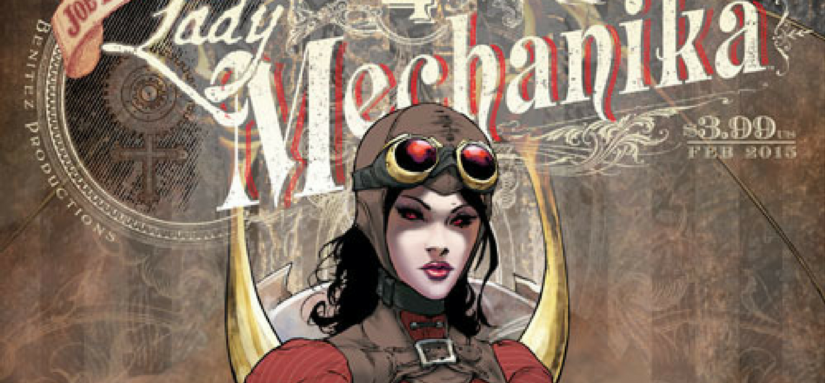
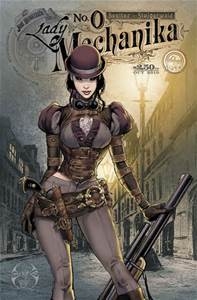



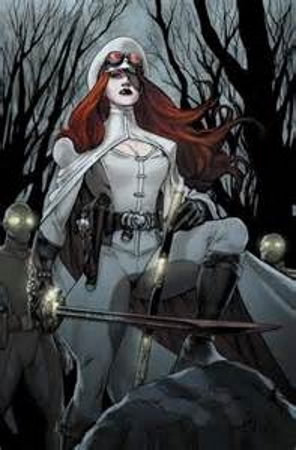
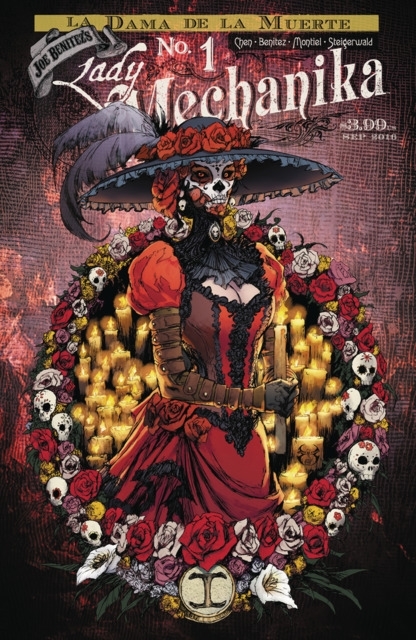

Comments are closed.